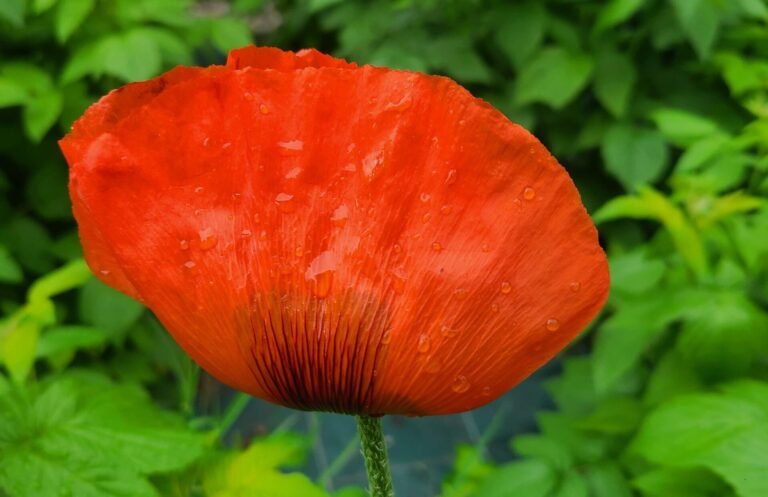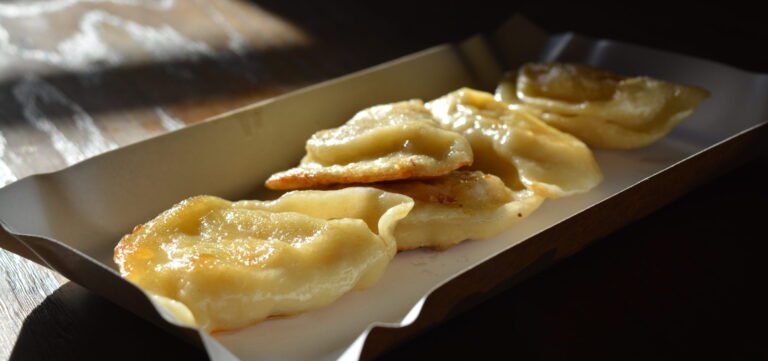Pumpkin spice, apple cider donuts, corn mazes…autumn is upon us!
In the U.S., fall begins with a whiff of the “PSL”, continues through spooky season, and culminates with the grand feast of Thanksgiving.
In Poland, things look a little different.
Celebrating the end of harvest season
A few years ago, I was fortunate to spend a year in Poland. I had never done this as an adult; for the first time, I was able to witness the activities and traditions associated with the changing seasons. Much to my surprise, when September rolled around there was little mention of pumpkins.
The Polish fall kicks off with Dożynki, a celebration of the end of the harvest and the hard work of the farmers. The festival, originating in the 16th century, includes three main components:
- reaping the last crops
- weaving an elaborate wreath from the cereal-crop stems and marching with it through town
- celebrating with a feast
The tradition originally took place during the first day of autumn, but it has since moved to earlier in September. It is a beautiful reminder of our connection to the earth.
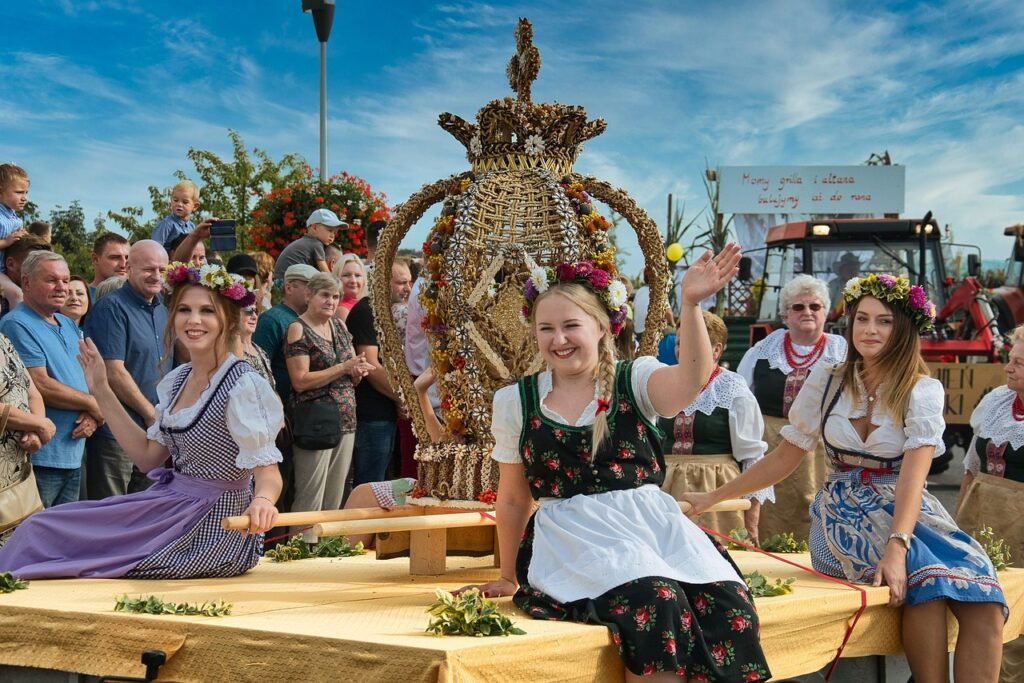
A tradition of mushroom picking
As the warmth of summer fades and Americans get lost in corn mazes, Polish people turn to forests for a popular pastime.
Kids collect chestnuts and acorns with which to make figurines. Adults, meanwhile, take in the last opportunity to hunt for mushrooms. Foraging is a tradition deeply rooted in Polish culture. When I was a kid, I didn’t appreciate mushroom hunting and got bored quickly. As I got older, however, I recognized the beauty of getting lost in the forest, absorbing the piney smells and subtle sounds, scanning the forest floor for borowiki, podgrzybki, and maslaki. A nice harvest meant more mushroom sauce for Wigilia (Christmas Eve dinner)!
Golden Polish Autumn
Much like in many parts of the U.S., October in Poland is a great time to enjoy changing leaves. The season has been nicknamed “Zlota Polska Jesien”, which translates to “Golden Polish Autumn”. And it is true—the leaves turn a beautiful golden hue.
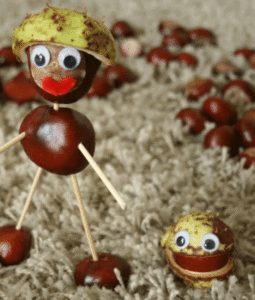
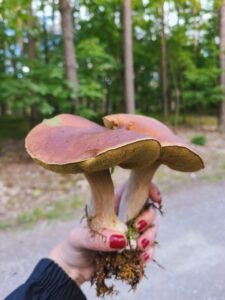
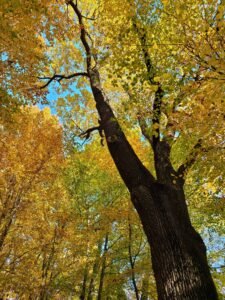
As the air cools, rather than a pumpkin spice latte, you’ll likely sip on a hot tea with lemon—the Polish staple comfort beverage. Instead of chili, you’re likely to enjoy a nice bowl of bigos, or hunter’s stew, made with a variety of meats, mushrooms, and sauerkraut. (I’m getting hungry just thinking about it).
This isn’t unique to Poland, but a common fall activity includes preparing fruits and veggies for use in the winter. This means drying, canning, or pickling a variety of goods, including apples, beets, tomatoes, squash, and mushrooms.
Remembering the deceased
November starts with a somber holiday of remembrance, All Saint’s Day. On this day, Polish people attend mass, which is usually followed by a procession through the cemetery. There, people pay respects to their deceased loved ones.
I was very fortunate to take part in this beautiful, somber holiday. From cleaning the tombstones a few days prior, to preparing floral arrangements for the graves, to attending the procession and walking around the cemetery placing candles on the tombs of deceased family and friends: all of it inspired reflection on the past and a deep sense of gratitude for the present.
The night of November 1st, and several of the nights that follow, is quite an experience. The cemeteries across the country come alive, illuminated brightly by the candles placed by loved ones.
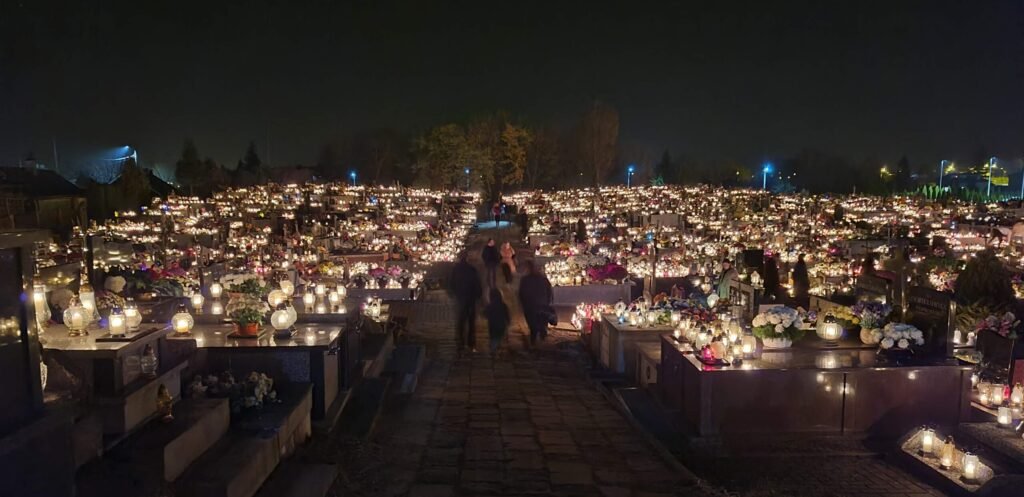
Halloween in Poland
Over the years, there has been disagreement on whether Halloween should become more widely accepted in Poland. Interestingly, the holiday was originally more closely related to All Saints Day than some may think.
Halloween originated over 2,000 years ago with the Celtic festival of Samhain. The festival commemorated the end of harvest season, and the beginning of the darker, more bleak winter. The Celts believed that during this time, spirits of the dead returned to earth. Throughout the festival, bonfires were used for honoring ancestors and protecting against evil spirits.
Over the years, the holiday morphed to All Hallow’s Eve and eventually Halloween. During this time, Christianity rose to prominence and the feasts of All Saint’s and All Souls Days were introduced. As the Christian influence swept throughout Europe, the traditions of the holiday honoring the dead blended with those of the Celtic festival.
Although related to its European origin, Halloween in the United States took on a distinct flavor. From the beginning, there was an emphasis on ghost stories, dress up, and mischief-making. Eventually, it turned into a holiday that gave kids permission to dress up and overindulge on candy, and gave adults and excuse to dress up and overindulge on alcohol.
Takeaways
In my opinion, it would be very difficult to merge the current, commercialized version of Halloween with the solemn holiday of All Saint’s Day. Although All Saints Day is celebrated among Christian communities in the U.S., it is much more prominent and involved in Poland.
My thought against more fully introducing it to Poland has nothing to do with Halloween being pagan—there are plenty of beautiful, pagan festivities widely celebrated in Poland.
It has more to do with the importance of maintaining a tradition that urges us to come together and reflect. Much like most of the autumn traditions mentioned in this post, it provides a reason for us to pause, to take a look at life, the earth, and our place within it.
And I think we need that now more than ever.
References
Halloween 2025. History.com Editors. https://www.history.com/articles/history-of-halloween
Image of Dozynki by Mariusz Czarnas on Pixabay. https://pixabay.com/users/mariusz_czarnas-1998272
Kreatywna jesień: Jak razem z dziećmi tworzyć magiczne figurki z kasztanów? https://magiczny-mazak.pl/kreatywna-jesien-jak-razem-z-dziecmi-tworzyć-magiczne-figurki-z-kasztanow
Why are Poles so obsessed with mushroom picking? Natalia Mętrak-Ruda https://culture.pl/en/article/why-are-poles-so-obsessed-with-mushroom-picking

